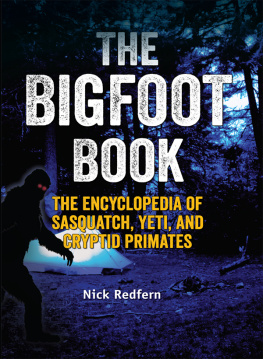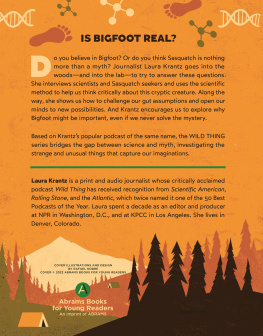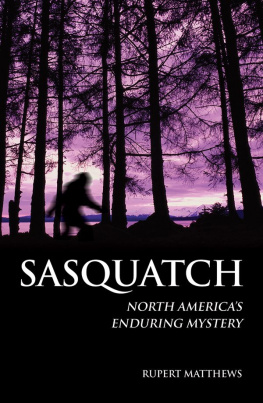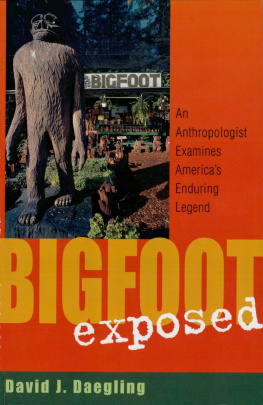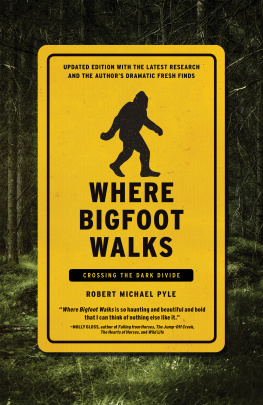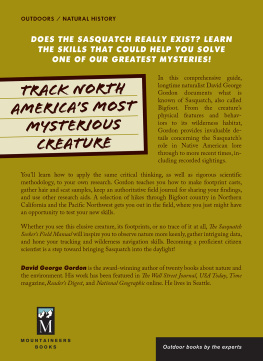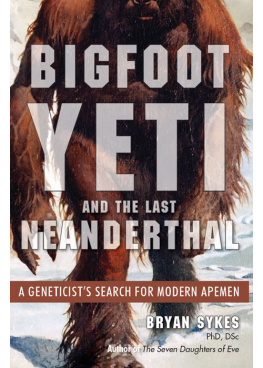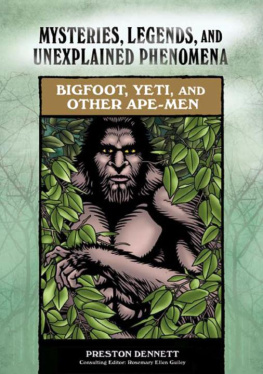Thanks to Jon Downes and everyone else at CFZ Press for their enthusiasm and hard work in bringing this project to life. Thanks also to Dr. Tuklo Nashoba for kind permission to reprint his story of a Choctaw battle with Sasquatch (Chapter 1); to Susie McIntyre at the Great Falls Library and Kathryn Showen and the Great Falls Tribune for timely assistance; to Wenatchee World librarian Linda Barta, ditto; to Darrell Ehrlic, editor of Montana's Billings Gazette, for providing long-lost articles; to Phil Thackeray for sharing his personal story (Chapter 6); to Doug Tarrant for permission to quote from various postings online; and to Dennis Bauer for clarifying sources from his exhaustive Internet archive of Sasquatch shootings (sadly removed from the Web on July 6, 2014, with an announcement that Bauer was "returning to the woods, forests, fields and meadows"). Their assistance is much appreciated, as is my wife's continuing forbearance.
Introduction
Where are the bones?
That question follows Sasquatch researchers wherever they break cover, posed by skeptics and professional debunkers. If large bipedal apes have been reported from six continents throughout recorded historyand they havewhy has no one killed or captured a single specimen for scientific study? In our automotive age, why has none been run down anywhere? Why has no hiker, hunter, or explorer found a Bigfoot's bones?
The question, on its face, seems perfectly reasonable. No less a personage than world-renowned paleoanthropologist Louis Leakey, when asked about Sasquatch, retorted, "Show me the bones." And indeedunder the International Code of Zoological Nomenclature and the International Code of Nomenclature for algae, fungi, and plantseach taxon (a group of one or more populations of a distinct organism) is based on a particular "type specimen." In order for Bigfoot-Sasquatch-Yeti to be scientifically classified, named, and (perhaps) legally protected, it must first be proven to exist.
That basic requirement has spawned a fierce "kill/no kill" debate among researchers and monster hunters worldwide. The practical (some say "cold-hearted") pro-kill advocates insist that one specimen must be sacrificed for the good of all, and for the advancement of science. No-kill proponents suggest various alternative methods of proof ranging from photographs or videosrejected sight-unseen by most skepticsto plans for collecting flesh, blood or hair for DNA sequencing without harm to a living creature.
So far, neither side has succeeded. Or, have they?
When debunkers ask for bones, they take for granted that none have ever been found, that no cryptic manbeast has ever been killed or captured. The public record, as we shall discover in these pages, flatly contradicts that assumption.
In May 2011, Internet blogger Robert Lindsay wrote that "humans have shot and killed Bigfoots 35 times in the last 182 years"an average of one kill every sixty-two months since 1829. He also cites multiple cases of manimals struck and killed by trains or cars since the 1880s; lists fourteen alleged discoveries of "Bigfoot burials or possible Bigfoot graveyards" witnessed by humans since 1949; and adds thirty instances of "possible Bigfoot bones, skulls, skeletons or teeth" found since 1858, nearly as frequent as alleged Sasquatch shootings.
Before doubters howl in derision, I am obliged to mention that Lindsay's tally, however wildly speculative or sparsely documented, is in fact too conservative . In the following pages, we shall review 165 claims of Bigfoot shootings, either fatal or serious enough to be potentially lethal. Our tally also includes twenty-three cases of supposed Bigfoot roadkills, sixteen alleged observations of burials or "possible" Bigfoot cemeteries, and 107 reports of giant remains discovered worldwide since the 16th century.
Are those accounts reliable? I leave readers to make that judgment, after pondering the documentary and anecdotal evidence. If scientists possessed a Bigfoot/Yeti corpse, the question would be moot.
Or would it?
As our final chapter shall attest, repeated claims have been advanced that a conspiracy exists to cover up proof positive of large unknown primates sharing our planet with mankind. In the United States alone, that plot allegedly includes the military, the Federal Bureau of Investigation, the Smithsonian Institution, various universities, the news media, state police and wildlife officials. The conspirators, we're told, have confiscated cryptid corpses, silenced witnesses, and falsifiedor, at the very least, suppressedreports of unknown primates on the prowl.
Why hide the most astounding scientific find of this or any other century?
According to the theorists, Bigfoot's existence, once established beyond question, threatens science and religion as we know them, challenging both adversaries in the endless struggle between evolution and creationism. Both sides, we are told, have vested interests in purging evidence of manimals at large. A mini version of that conflict drew global attention in 2003, with the discovery of Homo floresiensis nicknamed "the Hobbit"in Indonesia. More than a decade on, debate still rages as to whether "Flores man" represents a new species of ape, a parallel human race, or simply a group of unfortunates malformed by isolation and inbreeding. Imagine the rowand potential panicif it were proved that giant apemen have coexisted with Homo sapiens from antiquity, their presence concealed by leaders of government and scientific institutions.
Sasquatch Down takes no side in that argument and offers no endorsement of the stories told herein. The text exposes hoaxes where they have been proven, evaluates other reports on the evidence available (if any), and leaves readers to decide the question for themselves. Whatever the final verdict, I hope you enjoy the journey as much as I did.
Chapter 1. Wild Frontier (1767-1899)
Legends and traditions of hairy forest-dwelling manbeasts, known among aboriginal tribes by at least seventy-six different names, were well established when the first European explorers set foot in North America. Our first known report of a white man killing a Sasquatch involves famous frontiersman Daniel Boone (1734-1820), known in equal parts for his real-life derring-do and his addiction to "tall tales." The slaying of a hairy, ten-foot-tall creature that Boone dubbed a "Yahoo" allegedly occurred somewhere in Kentucky, probably during Boone's two-year hunting expedition of 1796-72.
Author Hugh Trotti, writing for Skeptical Inquirer in autumn 1994, posits that Boone derived his story of the "Yahoo" from reading Gulliver's Travels by Jonathan Swift, published eight years before Boone's birth. Part Four of that popular novel, titled "A Voyage to the Country of the Houyhnhnms," features descriptions of the hairy bipeds and includes Gulliver's capture of a three-year-old male specimen with a "smell very rank"often featured in modern descriptions of Sasquatch encounters. Boone, in Trotti's view, simply amended Swift's tale and transported the Yahoo to Kentucky for the amusement of his campfire companions.








